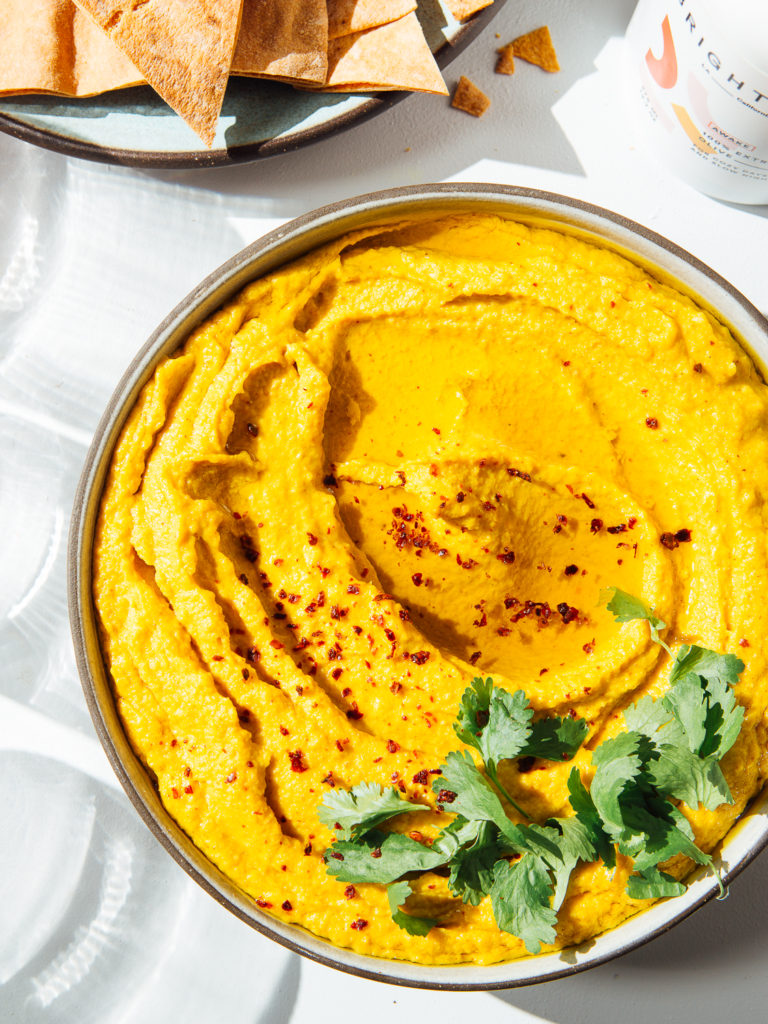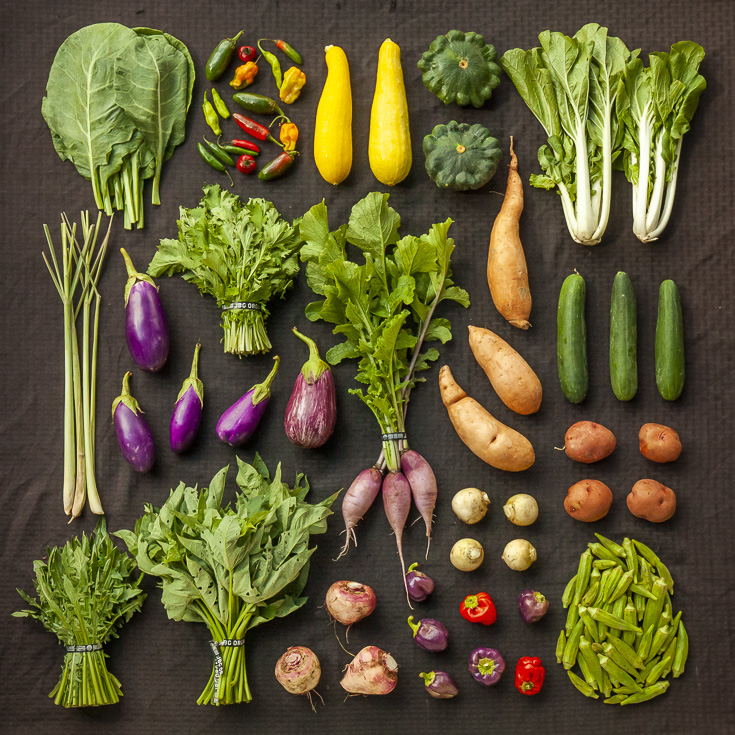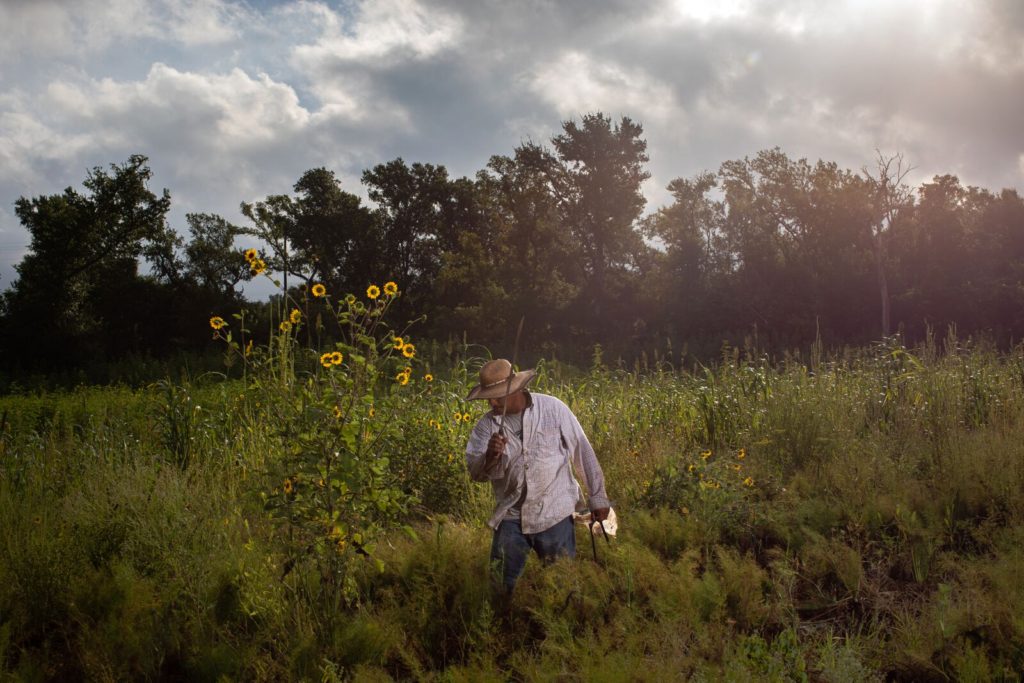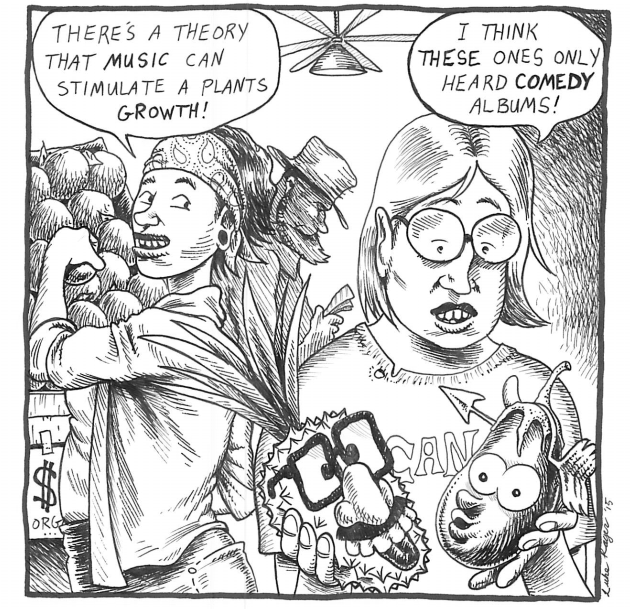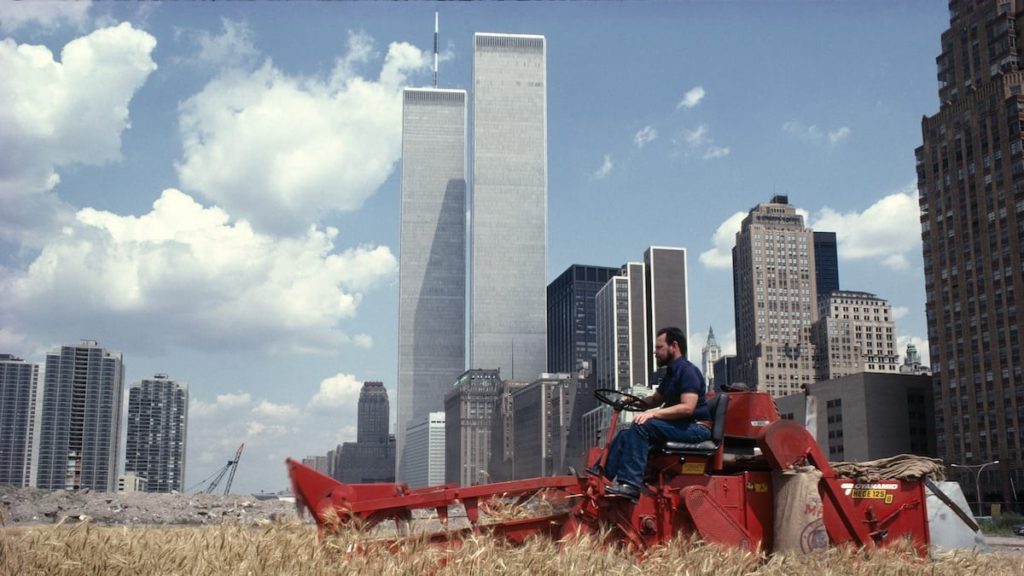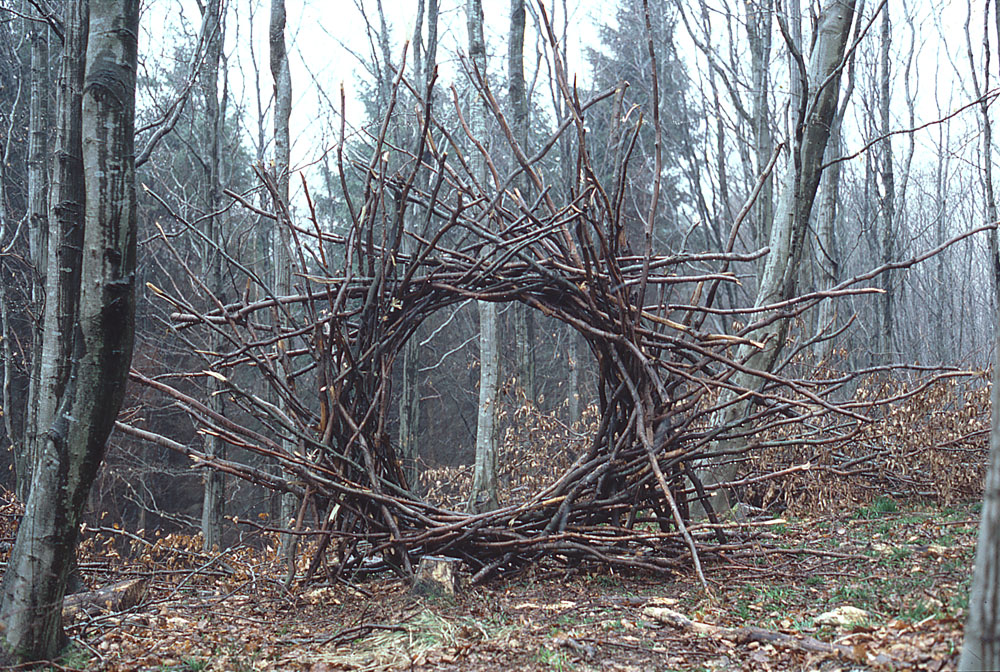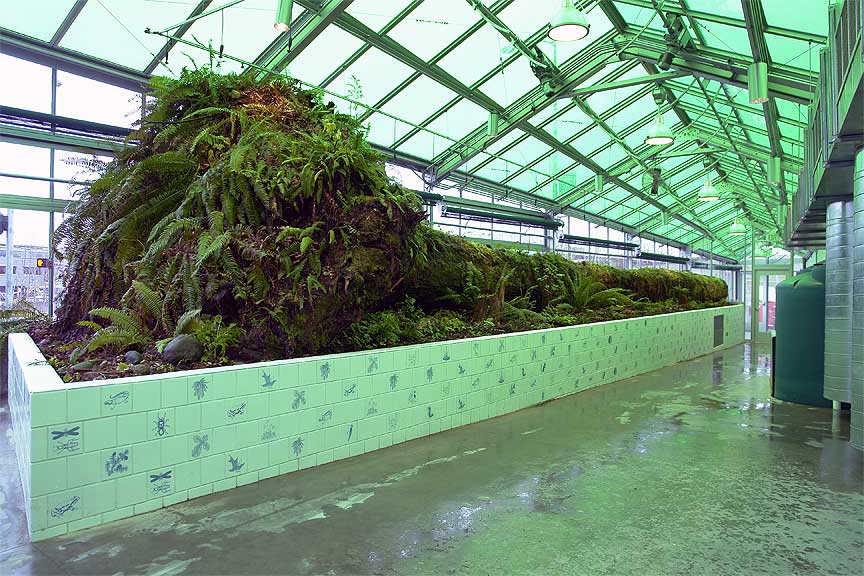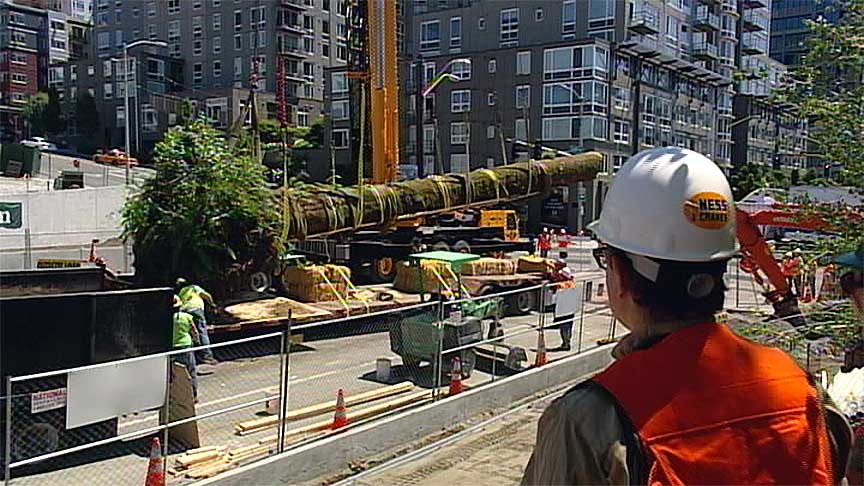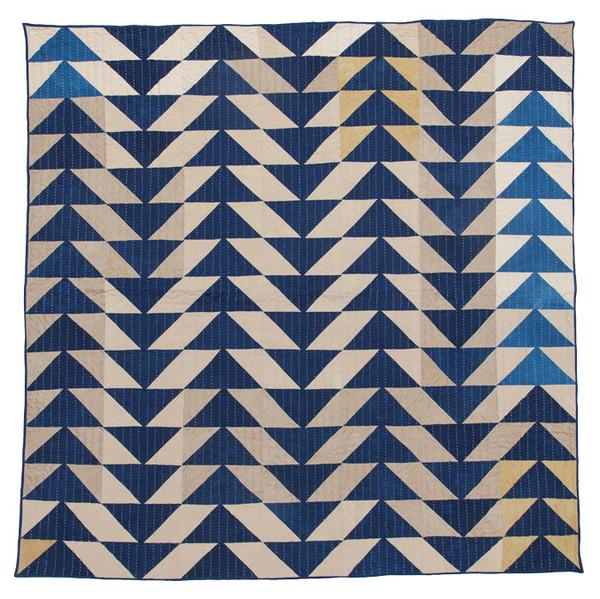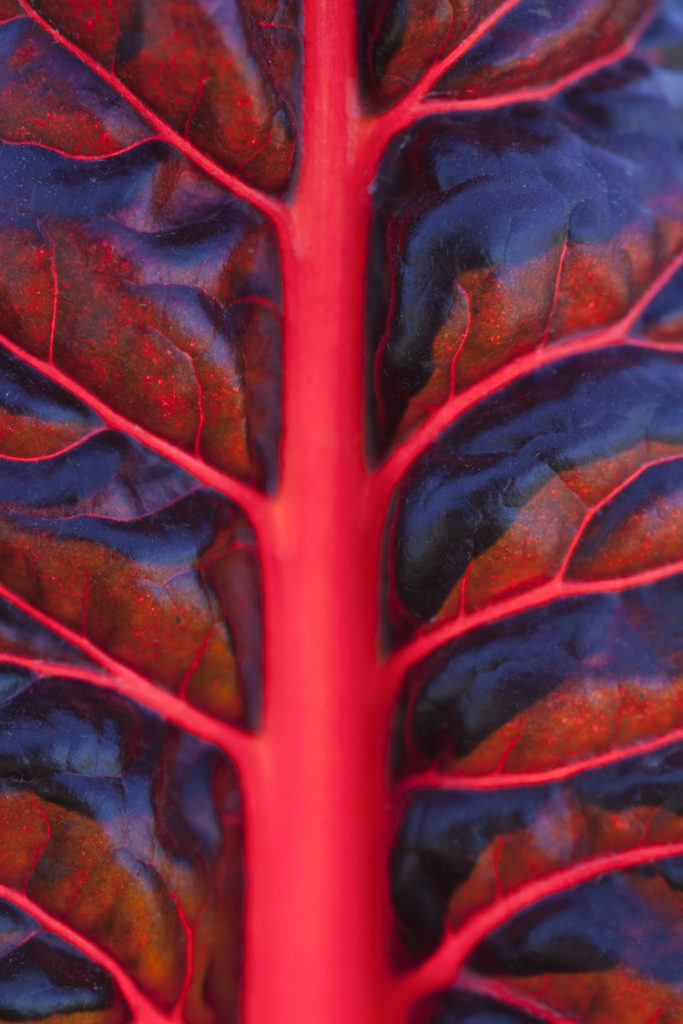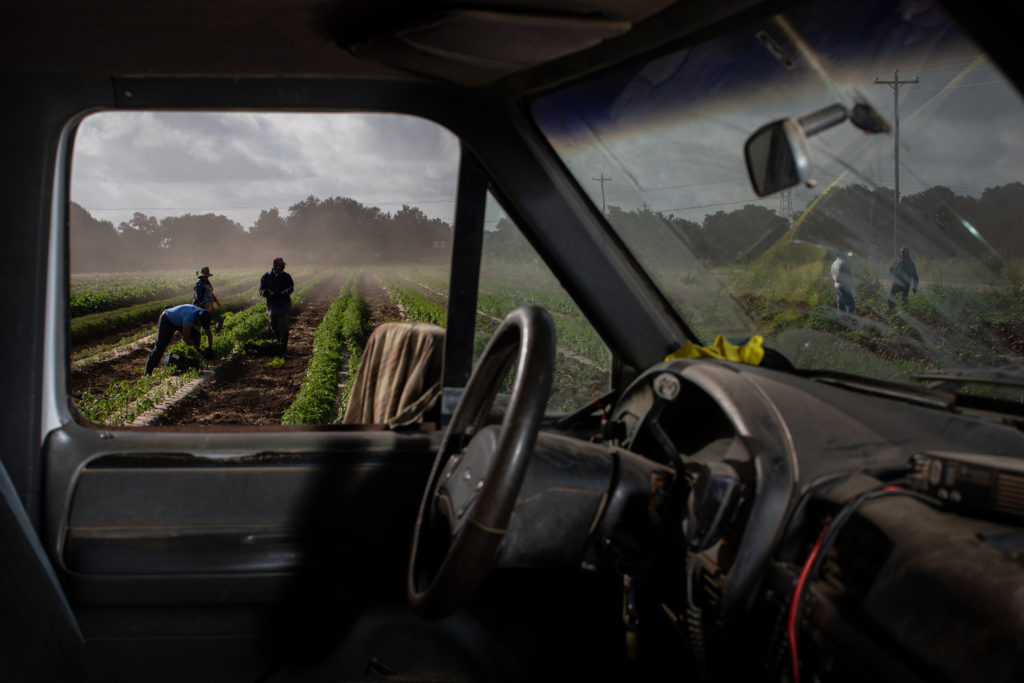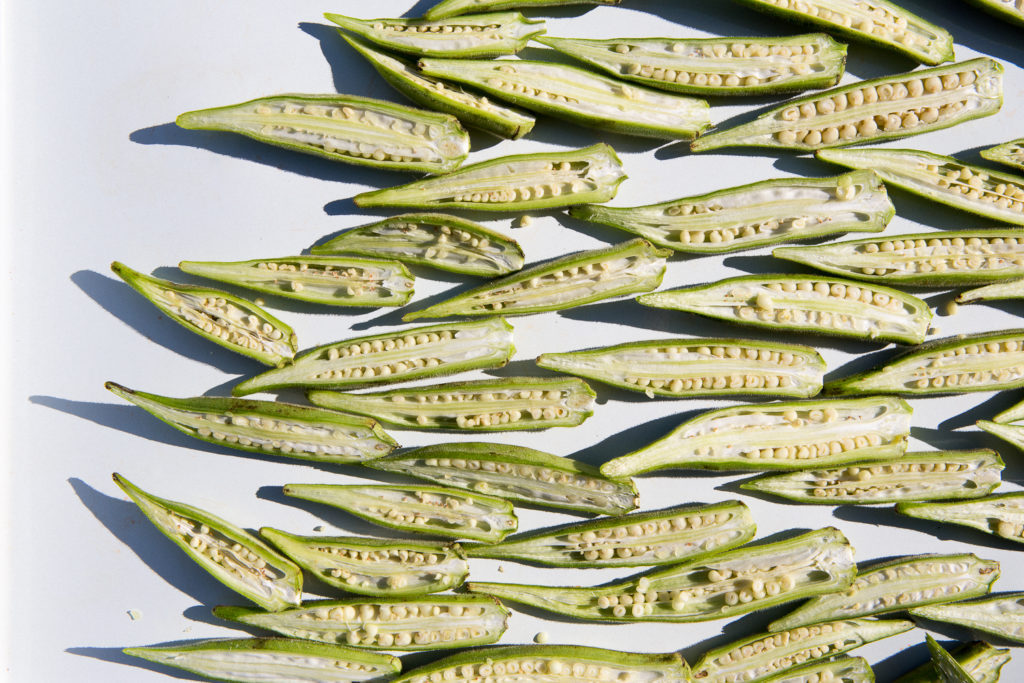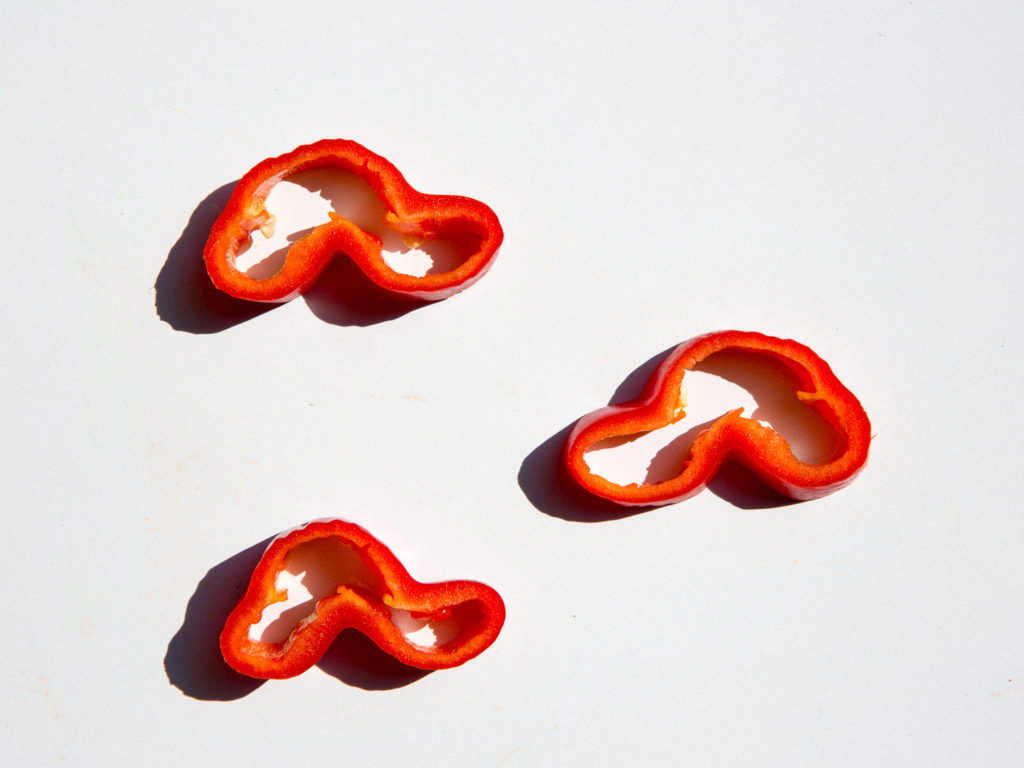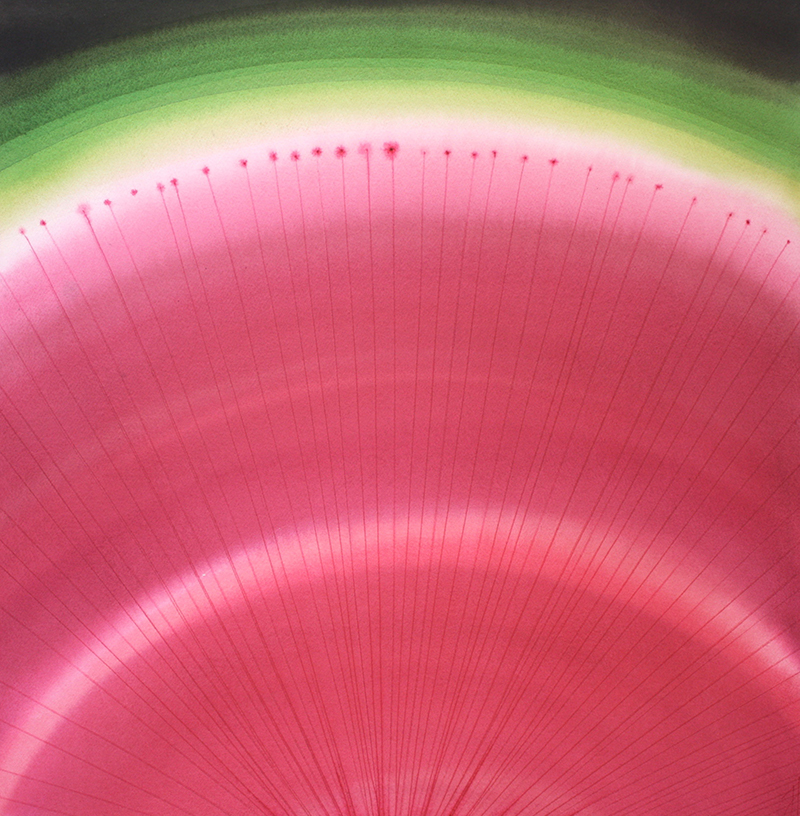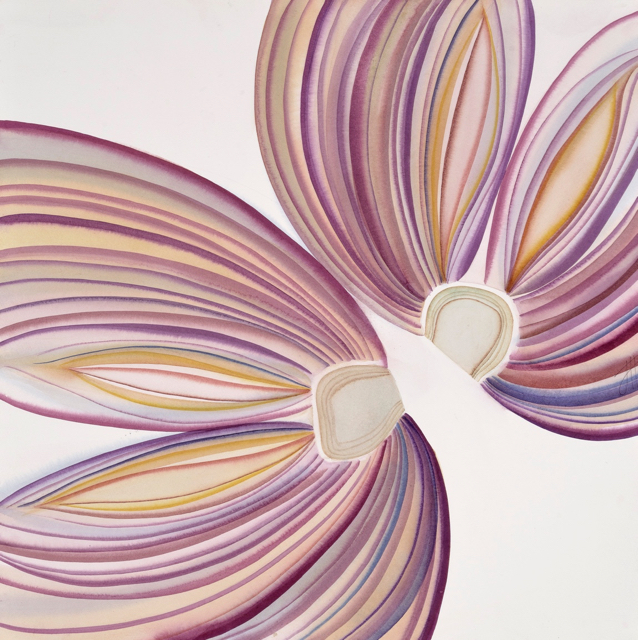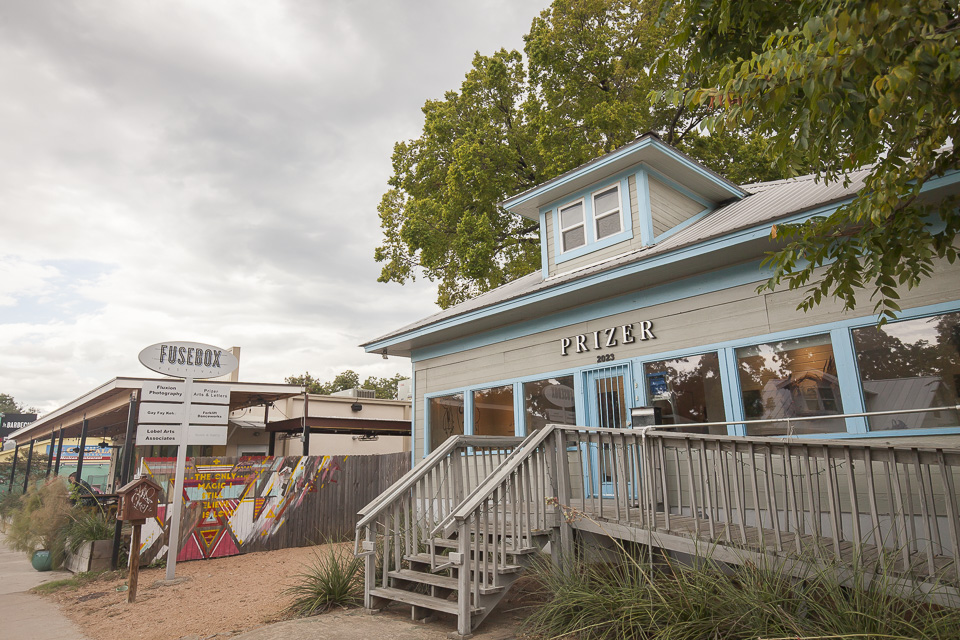
PHOTOS FROM THE FARM: 9.27.19
09/27/19 — Ada Broussard
A purple sky and bright, fragrant harvests of lemongrass. Scroll below to see what was happening this week at the farm.
![]() Some sunrises are purple, which has got to be a harbinger of fall. Photo by Scott David Gordon.
Some sunrises are purple, which has got to be a harbinger of fall. Photo by Scott David Gordon.
![]() Purple to blue, happens in a flash. Photo by Scott David Gordon.
Purple to blue, happens in a flash. Photo by Scott David Gordon.
![]() According to Farmer Brenton, this is an optimistic time at the farm. These 6 seedlings would have to agree. Photo by Scott David Gordon.
According to Farmer Brenton, this is an optimistic time at the farm. These 6 seedlings would have to agree. Photo by Scott David Gordon.
![]() Brenton and harvest manager, Vicente, scouting the fields. Photo by Scott David Gordon.
Brenton and harvest manager, Vicente, scouting the fields. Photo by Scott David Gordon.
![]() Potential, as far as the eye can see. Photo by Scott David Gordon.
Potential, as far as the eye can see. Photo by Scott David Gordon.
![]() Sweet potato (greens) harvest. Get 'em before they're gone. Photo by Scott David Gordon.
Sweet potato (greens) harvest. Get 'em before they're gone. Photo by Scott David Gordon.
![]() Our fall crops are a bit confused by this lingering heat. Fingers crossed they'll make it. Photo by Scott David Gordon.
Our fall crops are a bit confused by this lingering heat. Fingers crossed they'll make it. Photo by Scott David Gordon.
![]() Repairs, and then more repairs. Photo by Scott David Gordon.
Repairs, and then more repairs. Photo by Scott David Gordon.
![]() Bunched lemongrass stalks. Photo by Scott David Gordon.
Bunched lemongrass stalks. Photo by Scott David Gordon.
![]() Vicente in his summer hat, harvesting early fall collards. Photo by Scott David Gordon.
Vicente in his summer hat, harvesting early fall collards. Photo by Scott David Gordon.
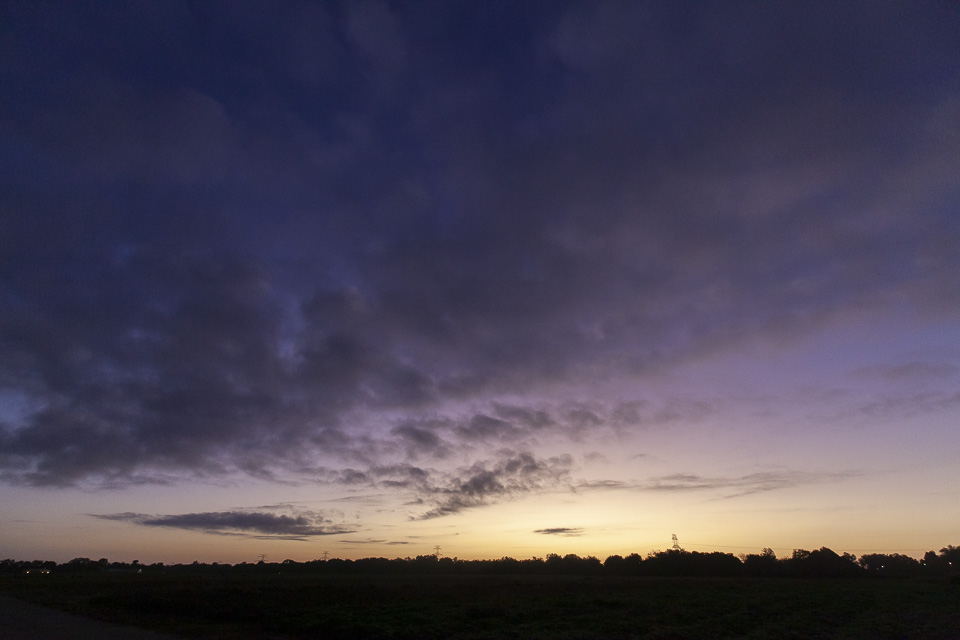 Some sunrises are purple, which has got to be a harbinger of fall. Photo by Scott David Gordon.
Some sunrises are purple, which has got to be a harbinger of fall. Photo by Scott David Gordon.
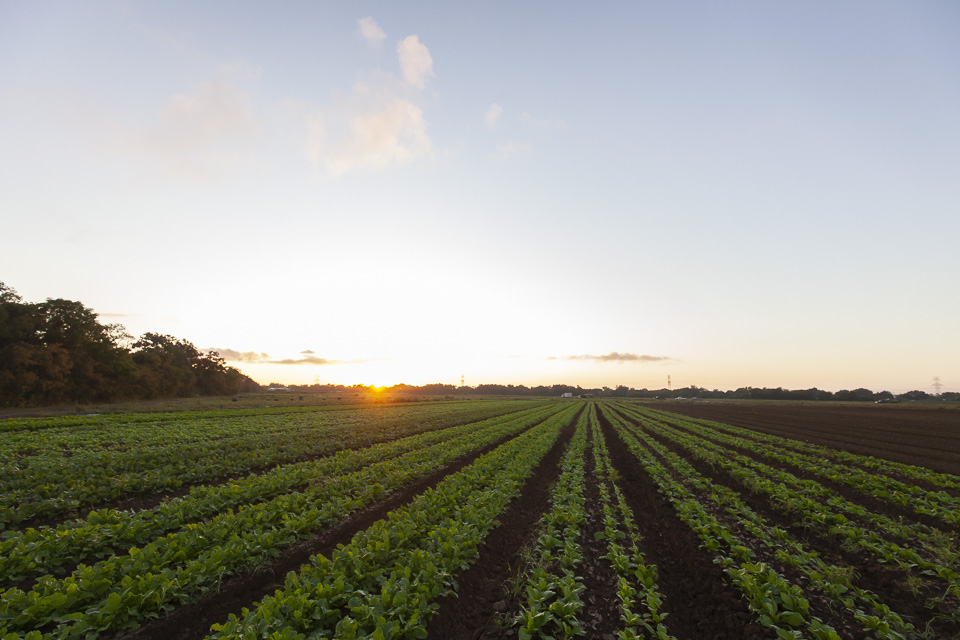 Purple to blue, happens in a flash. Photo by Scott David Gordon.
Purple to blue, happens in a flash. Photo by Scott David Gordon.
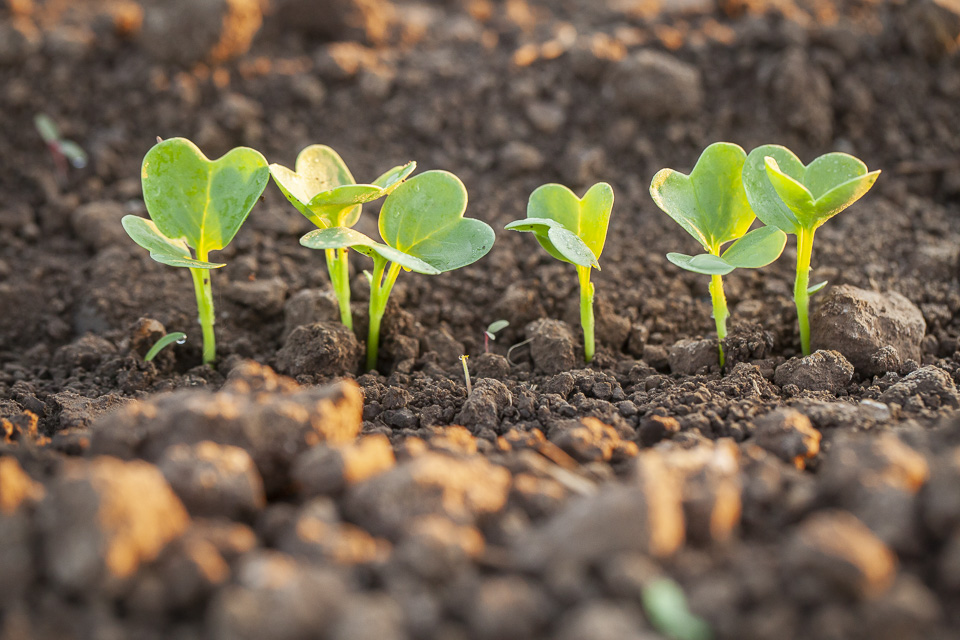 According to Farmer Brenton, this is an optimistic time at the farm. These 6 seedlings would have to agree. Photo by Scott David Gordon.
According to Farmer Brenton, this is an optimistic time at the farm. These 6 seedlings would have to agree. Photo by Scott David Gordon.
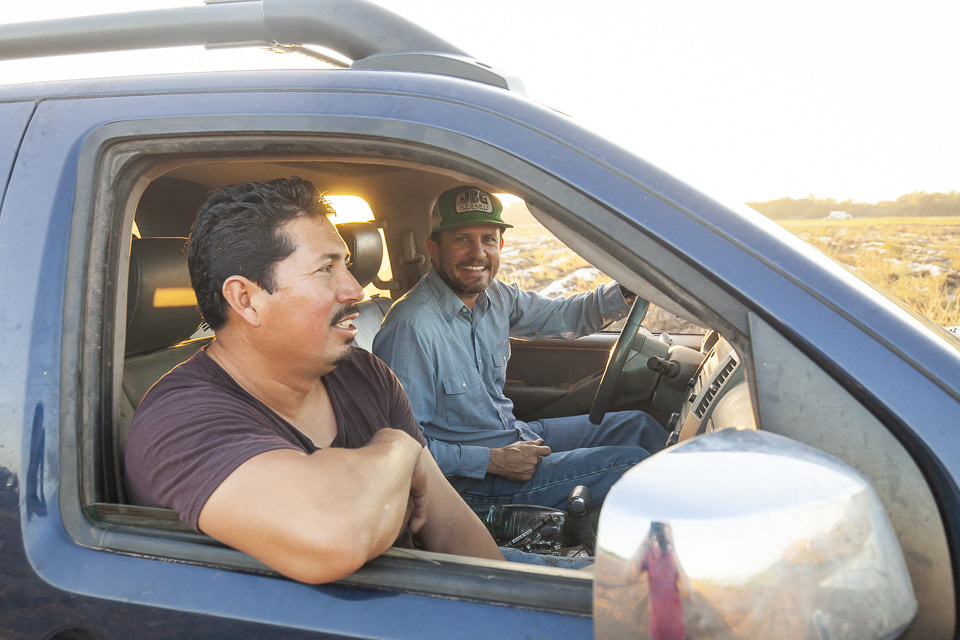 Brenton and harvest manager, Vicente, scouting the fields. Photo by Scott David Gordon.
Brenton and harvest manager, Vicente, scouting the fields. Photo by Scott David Gordon.
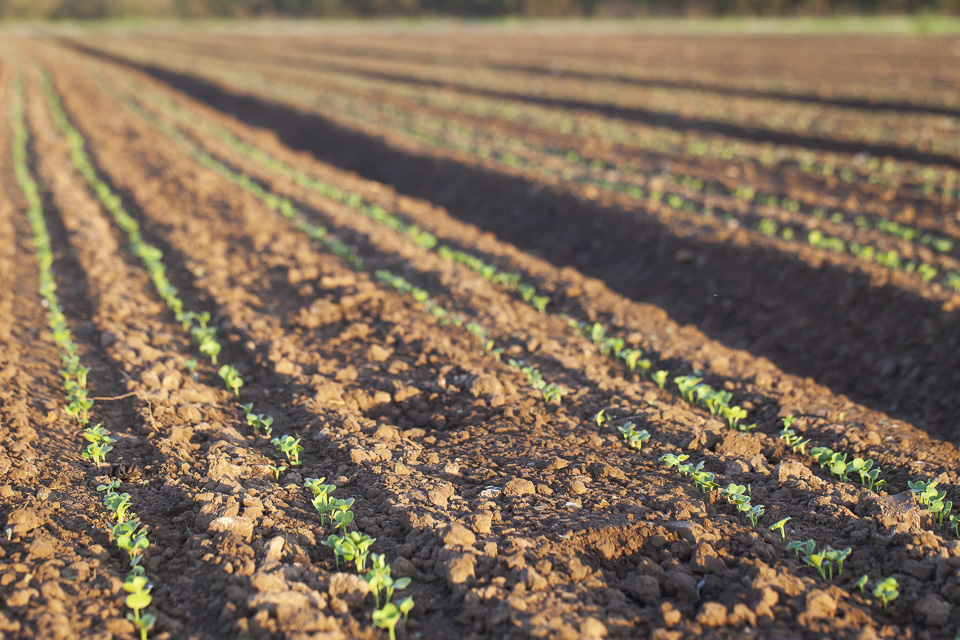 Potential, as far as the eye can see. Photo by Scott David Gordon.
Potential, as far as the eye can see. Photo by Scott David Gordon.
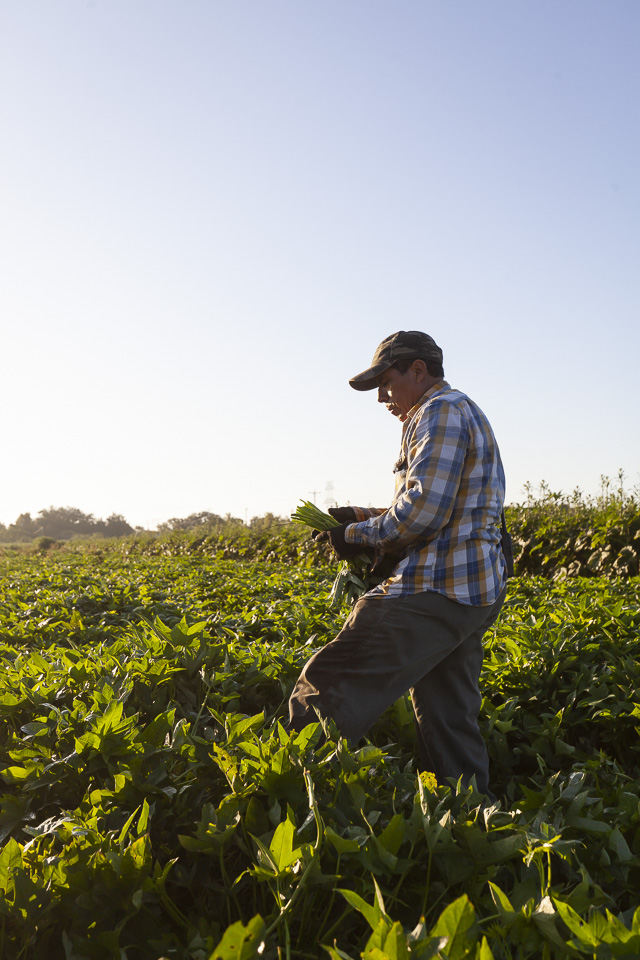 Sweet potato (greens) harvest. Get 'em before they're gone. Photo by Scott David Gordon.
Sweet potato (greens) harvest. Get 'em before they're gone. Photo by Scott David Gordon.
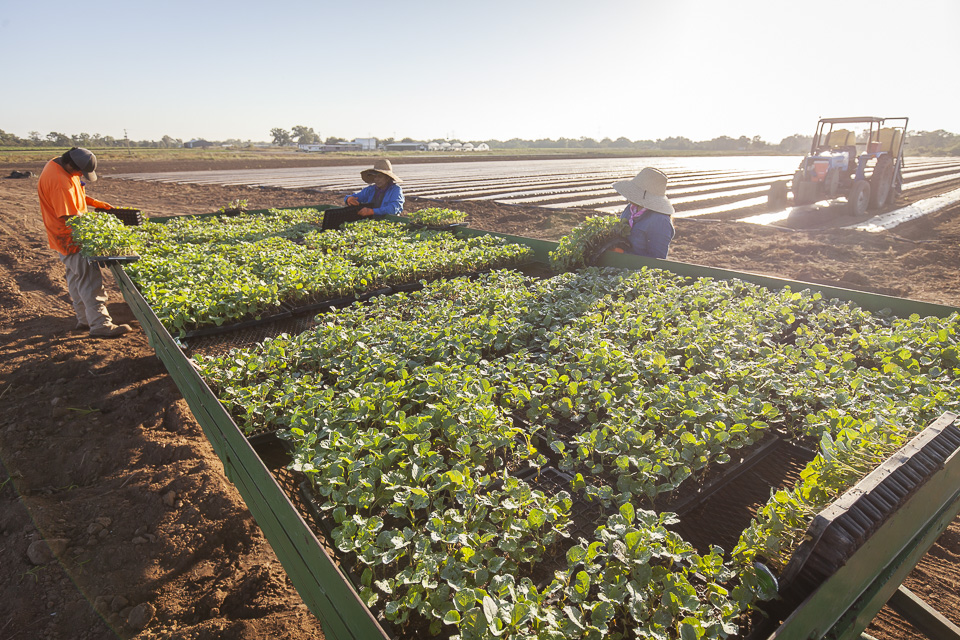 Our fall crops are a bit confused by this lingering heat. Fingers crossed they'll make it. Photo by Scott David Gordon.
Our fall crops are a bit confused by this lingering heat. Fingers crossed they'll make it. Photo by Scott David Gordon.
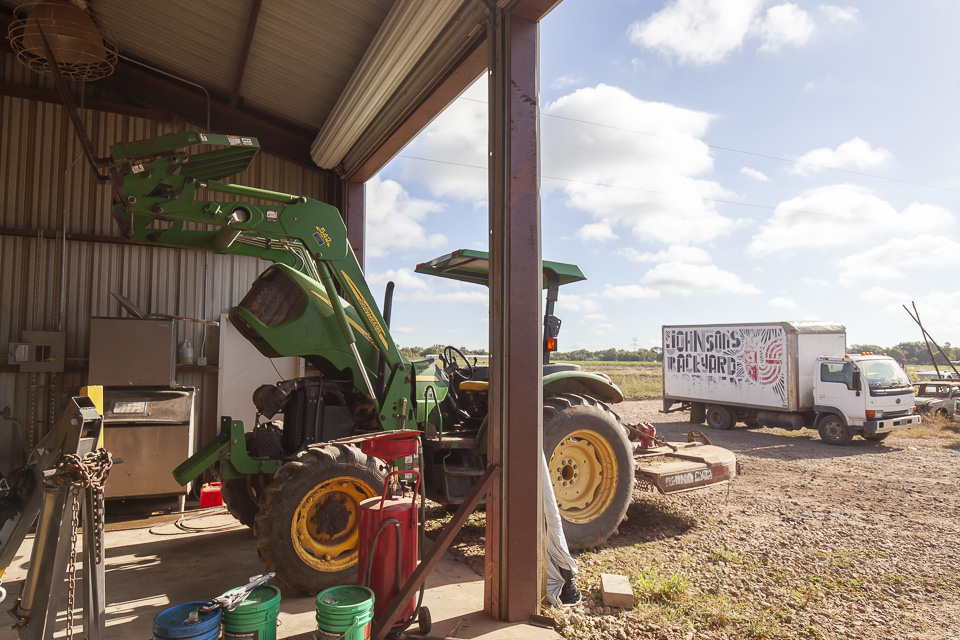 Repairs, and then more repairs. Photo by Scott David Gordon.
Repairs, and then more repairs. Photo by Scott David Gordon.
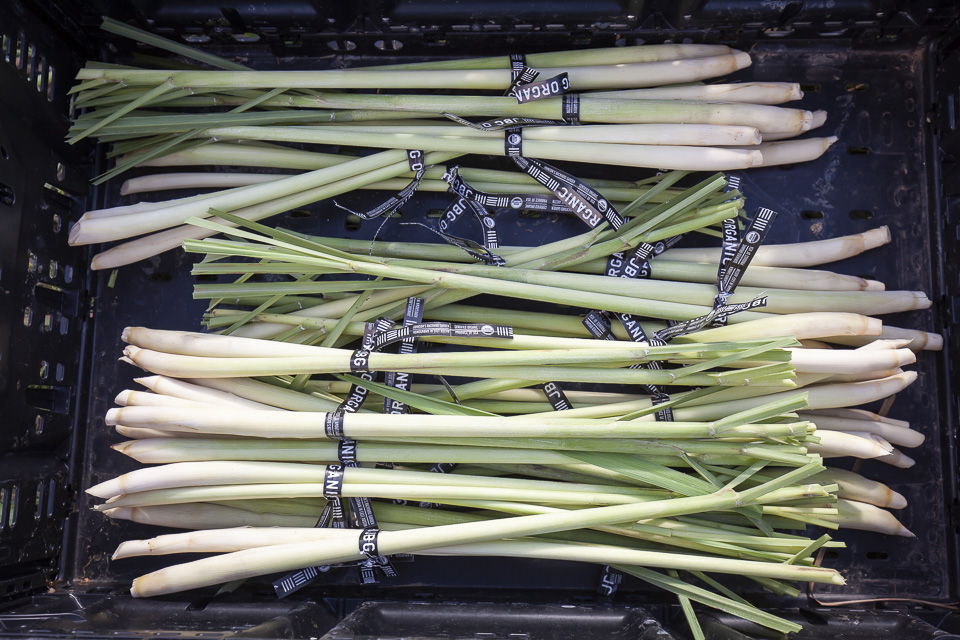 Bunched lemongrass stalks. Photo by Scott David Gordon.
Bunched lemongrass stalks. Photo by Scott David Gordon.
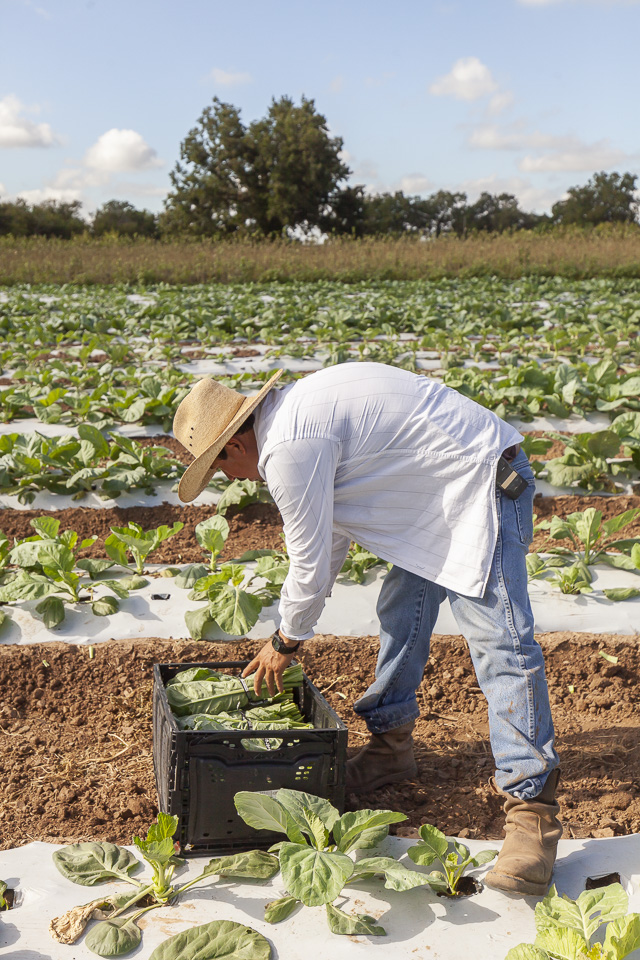 Vicente in his summer hat, harvesting early fall collards. Photo by Scott David Gordon.
Vicente in his summer hat, harvesting early fall collards. Photo by Scott David Gordon.
EGGPLANT CAPONATA
09/25/19 — Ada Broussard
 Recipe by Megan Winfrey
Recipe by Megan Winfrey
Meals on toast are becoming a regular thing at my house, for the simplicity and for the love of good bread. This eggplant caponata spooned over toasted bread with a generous smear of mascarpone has served as breakfast, lunch, and dinner at least once this week. Tonight, I'm excited to use up the rest of it by folding it in with whatever short shape pasta I have on hand. I'll probably add some feta and fresh parsley over the top. Mmmmm my mouth is watering just thinking about it! I've never been a huge fan of eggplant, but this recipe will certainly join our regular rotation when the late summer CSA is brimming with these hearty nightshades.
- 4 eggplant, cut into 3/4" inch cubes
- 2 tbs. kosher salt
- 4 cups vegetable, coconut, or avocado oil
- 1/2 cup sliced almonds
- 1 red onion, thinly sliced
- 2 serrano peppers, thinly sliced (remove seeds for less spice)
- 3 garlic cloves, thinly sliced
- 1/4 tsp. paprika
- 1 cup crushed tomatoes
- 1/2 cup red wine vinegar
- 3 tbs. sugar
- Grilled crusty bread and mascarpone (or any spreadable cheese) for serving
Pour the 4 cups of oil to a dutch oven or heavy bottomed pan and add the eggplant to the room temperature oil. Heat on high and cook, stirring occasionally, until eggplants are golden brown - about 30 minutes. Transfer eggplant to a paper towel to drain and cool down. While the eggplant is cooking, toast the almonds in a small dry skillet over low heat until lightly brown and just beginning to smell. Set aside. Using the same dutch oven or pan, add a few tablespoons of olive oil or ghee and heat over medium. Cook the onions, chiles, and garlic until tender. Stir in the paprika and cook for another minute before adding the tomatoes, vinegar, and sugar. Bring to a boil and stir to dissolve the sugar. Add the nuts and eggplants, toss to heat through and adjust seasoning. Remove from the heat, let cool to your desired temperature, and serve with mascarpone and toasted crusty bread.
CSA BOX CONTENTS WEEK OF SEPT 23RD
09/24/19 — Scott
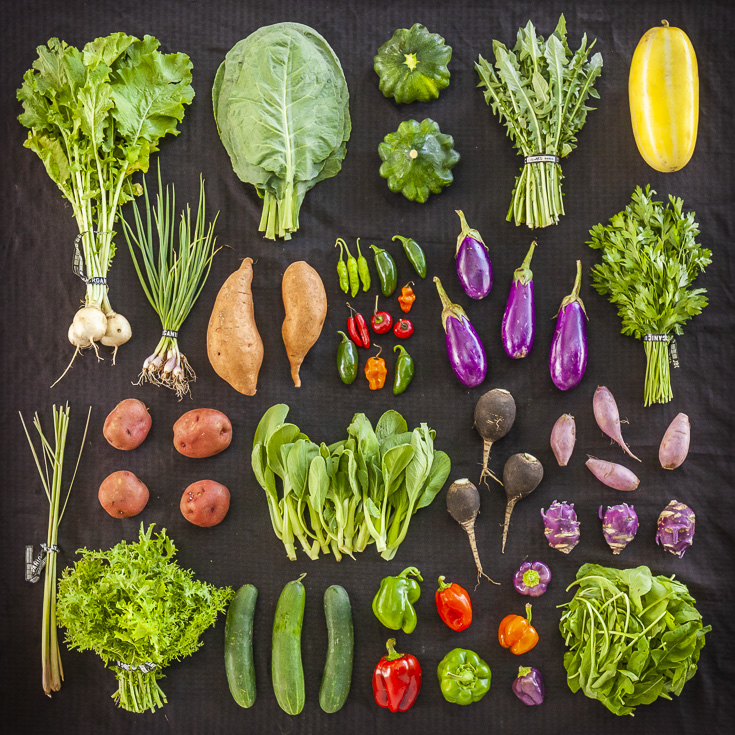 CSA Box Contents Week of Sept 23rd
CSA Box Contents Week of Sept 23rd
Large Box
Bok Choy, Baby
Cucumber
Eggplant
Greens, Collards
Greens, Mustard
Herb, Parsley, Flat
Melon, Farmers Choice
Okra
Onion, Multiplying
Potato, Sweet
Radish
Turnips
Bok Choy, Baby
Cucumber
Eggplant
Greens, Collards
Greens, Mustard
Herb, Parsley, Flat
Melon, Farmers Choice
Okra
Onion, Multiplying
Potato, Sweet
Radish
Turnips
Medium Box
Eggplant
Greens, Arugula
Greens, Collards
Herb, Parsley, Flat
Melon, Farmers Choice
Okra
Onion, Multiplying
Potato, Sweet
Radish
Turnips
Eggplant
Greens, Arugula
Greens, Collards
Herb, Parsley, Flat
Melon, Farmers Choice
Okra
Onion, Multiplying
Potato, Sweet
Radish
Turnips
Small Box
Greens, Arugula
Greens, Collards
Herb, Parsley, Flat
Melon, Farmers Choice
Onion, Multiplying
Potato, Yukon Gold
Radish
Greens, Arugula
Greens, Collards
Herb, Parsley, Flat
Melon, Farmers Choice
Onion, Multiplying
Potato, Yukon Gold
Radish
Individual Box
Bok Choy, Baby
Melon, Farmers Choice
Okra
Potato
Radish
Bok Choy, Baby
Melon, Farmers Choice
Okra
Potato
Radish
EATING FOR PLANETARY HEALTH
09/19/19 — Ada Broussard
This week we're sharing a piece written by our friends at the Sustainable Food Center about how to eat to better for the health of the planet. There are so many reasons that many of you choose to be CSA Members including the convenience of delivery, the quality and taste of the produce, the interest in supporting the local economy... but today we're here to remind you that no matter what reason you choose to buy produce from us, you're also doing Plant Earth a favor. As always, thank you for your support! And thank you to SFC for sharing this wonderful piece!
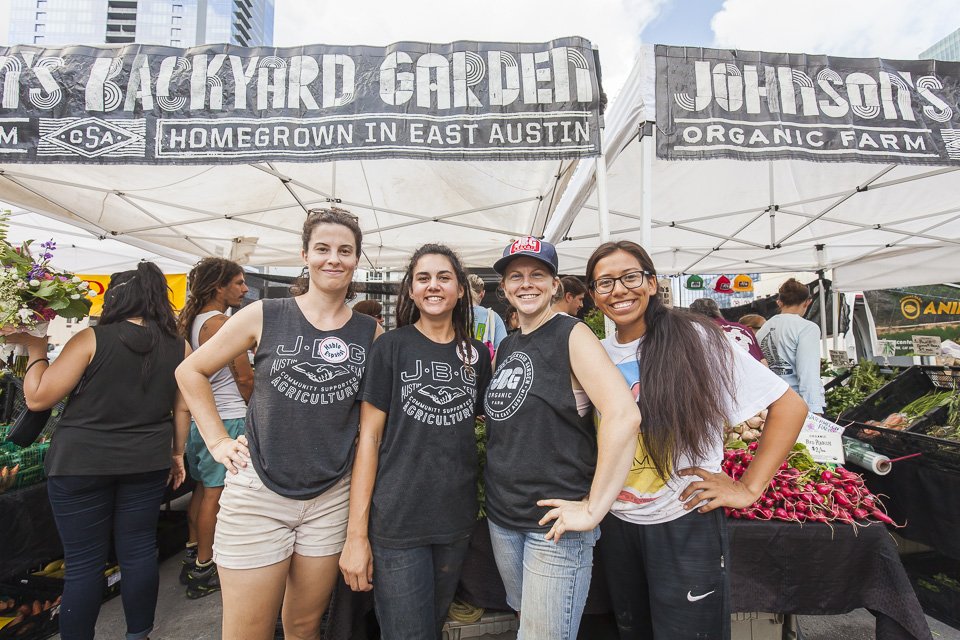 Friendly farmer faces are another good reason to buy locally. Photo by Scott David Gordon.
Friendly farmer faces are another good reason to buy locally. Photo by Scott David Gordon.
HOW YOU CAN EAT FOR PLANETARY HEALTH
Adrienne Haschke, SFC Farm Direct Program Director
“For I have no doubt that it is only on the condition of humility before our Planet that our species will be able to remain in it.” – Wendell Berry
We are at a critical moment in time. We face deep environmental harm, ongoing food insecurity and increasing rates of diet-related disease caused by the industrial food system. But it’s not too late to make a difference. We must act now to protect the health of our planet.
Planetary Health is a term coined in 2014 and expanded on by EAT-Lancet Commission, and refers to how human health is linked to the health of our environment. The Planetary Health movement recognizes that, “everything is connected — what we do to the world comes back to affect us” - Planetary Health Alliance.
By making different individual food choices, supporting sustainable agriculture and creating systems-level transformative change we can protect our health, rehabilitate the Planet, and restore balance with the land and the animals whose lives are defined by the way we eat.
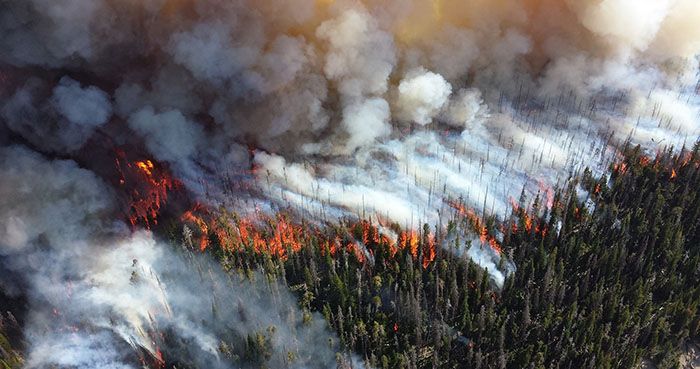
Stock image used for illustration purposes. Not an actual picture of the Amazon.
HOW INDUSTRIAL AGRICULTURE HURTS OUR PLANET
There is no better example of how industrial agriculture can harm our environment than the catastrophic wildfires in the Amazon rainforest. This region of stunning plant and animal diversity and “the lungs of our Earth” is being destroyed largely for the benefit of agriculture.
But rainforests aren’t the only precious resource being damaged by globalized industrial agriculture.
- Freshwater: Cropland irrigation uses 70% percent of the Earth’s freshwater and is depleting underground reserves more quickly than they can be replenished.
- Oceans: Creeks, streams and rivers are polluted with soil particles, fertilizer and pesticide runoff. Every spring, fertilizer from the Midwest “bread basket” runs off into the Mississippi River. These excess nutrients are carried all the way to the Gulf of Mexico, where every summer they create a “Dead Zone” the size of New Hampshire.
- Carbon Emissions: Agriculture – in particular, industrial beef production - is a significant contributor to climate change, accounting for roughly 25% of global greenhouse gas emissions.
- Species Diversity: The Intergovernmental Science-Policy Platform on Biodiversity and Ecosystem Services (IPBES) released a recent report warning of rising extinction rates. An estimated 1 million species are threatened with extinction, many within decades, due in large part to land-use changes for agriculture.
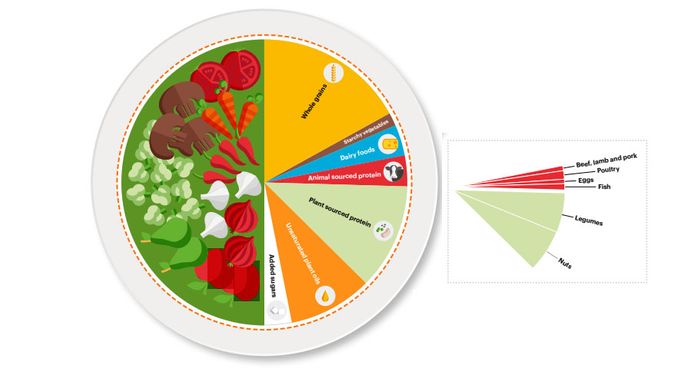
HOW TO PLAN YOUR MEALS FOR PLANETARY HEALTH
“Food is the single strongest lever to optimize human health and environmental sustainability on Earth.” Eat-Lancet Summary Report
The first step in taking action for better Planetary Health is changing type of food you put on your plate. By making some simple changes, you can plan all your meals for Planetary Health and make an even greater impact for the benefit of our environment.
As shown in the image above, a Meal for Planetary Health is rich in plant-based foods with modest amounts of sustainably-sourced animal proteins. Refined grains and low-quality meat proteins are two of the main drivers behind large-scale production of a few industrialized crops.
If we all made some slight changes in our eating habits and introduced a larger variety of plant foods and plant-based proteins, then we could collectively reduce the negative environmental impacts of industrial agriculture.
Currently, only 1 out of 10 adults is eating enough fruits and vegetables. To eat for Planetary Health, focus on filling half of your plate with vegetables and fruits, and the other half made of whole grains, plant-based proteins, healthy oils and some sustainably-sourced animal proteins. The average American is encouraged to double the daily amount of fruits and vegetables, and triple the daily amount of legumes and nuts, they eat.
Eating a variety of foods like this can meet the average, healthy American’s protein, carbohydrate, fiber, vitamin and mineral needs while limiting saturated fats, sodium, and carcinogenic nitrates found in processed meats.
Every time you choose to plan, prepare and share a Meal for Planetary Health, you are contributing to a kinder, more compassionate world and improving your health along the way.
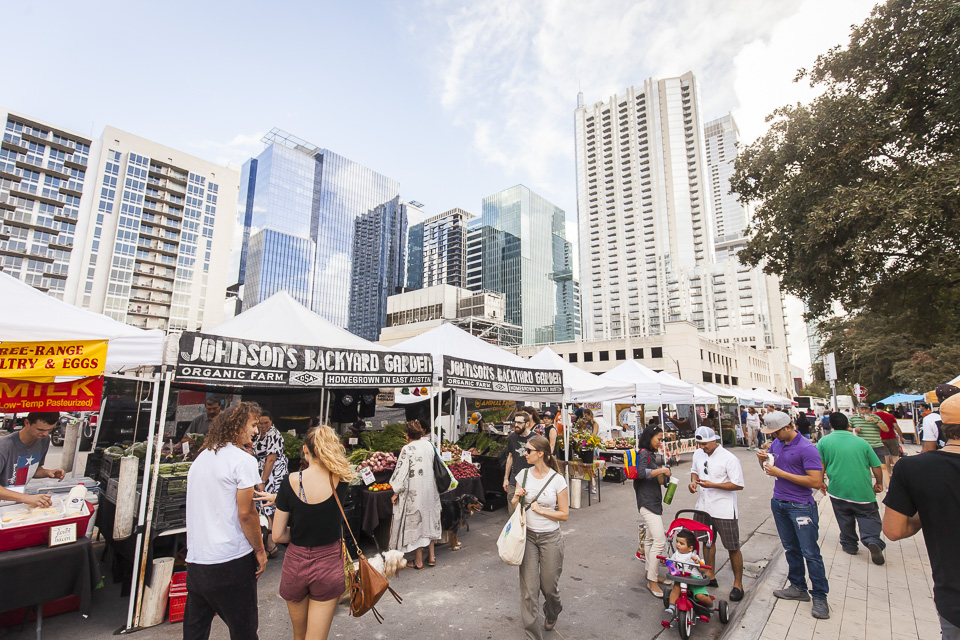 Our booth at SFC's Downtown Farmers' Market. Photo by Scott David Gordon.
Our booth at SFC's Downtown Farmers' Market. Photo by Scott David Gordon.
SHOP FROM LOCAL SUSTAINABLE FARMS TO PROTECT PLANETARY HEALTH
The next step in taking action for Planetary Health is buying your food from sustainable farms. Sustainable agriculture has the ability to heal and regenerate the land.
An increasing number of farms and ranches are moving to practices that mirror native ecosystems – they replenish the soil and pasture, protect sensitive watersheds, allow for natural animal behaviors, preserve and restore biodiversity, and minimize greenhouse gas emissions. And we are fortunate to have a wide variety of these farms and ranches right here in Central Texas.
Many of the farmers and ranchers at our SFC Farmers’ Markets are managing their pastures to holistically incorporate cows, chickens, pigs, goats and other livestock in their operations.
Responsibly rotating animals in dense herds or flocks has the power to transform landscapes into thriving ecosystems. It can re-build soil organic matter, grow healthy perennial grasses, increase water retention in the soil, repair waterways, restore pollinators and native bird species, pull carbon out of the atmosphere, and so much more.
When you support sustainable farms, you are supporting the livelihood of people who are working to protect our land. By shopping at your local farmers’ market, like our SFC Farmers’ Markets, you can buy your food directly from the farmer who grew it.
At a farmers’ market, you can talk to the farmer about how your food was raised - empowering you to make food choices for better Planetary Health. While you’re at the market, round out your grocery shopping with fresh produce and value-added items such as locally-made honey, bread, hummus, salsa, kimchi and fermentables, and more!
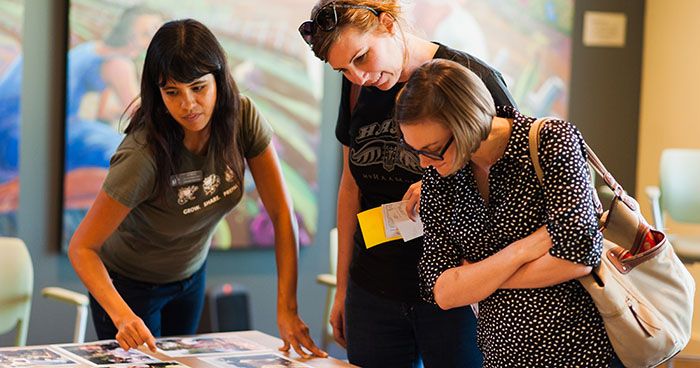
SYSTEMS LEVEL CHANGES TO PROTECT PLANETARY HEALTH
Individual choices matter to the future of our planet. But wide-spread systems change will be the key to facing climate change head-on.
The EAT Lancet Report offers the following strategies to achieve a fundamental, system-wide change:
1. Make healthy foods more available, accessible and affordable.
2. Intensify sustainable agriculture production.
3. Shift production towards a greater diversity of foods rather than higher volumes of a few crops largely grown to feed livestock.
4. Strong governance of land and oceans, in order to conserve and manage natural ecosystems, species-rich forests and the world’s oceans.
5. Minimize food loss and waste.
At Sustainable Food Center we are - alongside many regional, statewide, and national partners - actively working on strategies 1 and 2 listed above. We are also building new programs to support and celebrate the hard work, passion, and skill of sustainable farmers and ranchers in Central Texas. As we move into the future with our new vision, we hope to make big strides on systems-level change here in Texas.





 0 ITEMS IN CART
0 ITEMS IN CART 
